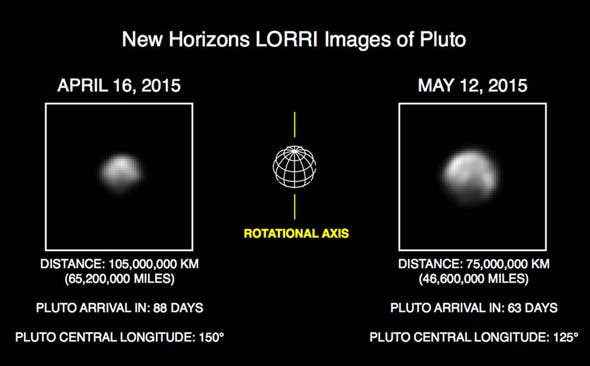In the past couple of months, we’ve posted quite a lot of articles about the New Horizons spacecraft zooming in on Pluto. It got close enough to see its moons, to see it in color, and to see it at unprecedented resolution. Now, New Horizons got even closer to Pluto and guess what – it took some even better photos.
“These new images show us that Pluto’s differing faces are each distinct; likely hinting at what may be very complex surface geology or variations in surface composition from place to place,” said New Horizons principal investigator Alan Stern of the Southwest Research Institute in Colorado.
The images were taken from just under 77 million kilometres away, using the Long-Range Reconnaissance Imager (LORRI) on New Horizons – a powerful telescopic camera. The shots were taken from 80, 77, and 75 million km away and they’re already significantly better than existing photos taken by Hubble.
“As New Horizons closes in on Pluto, it’s transforming from a point of light to a planetary object of intense interest,” said NASA’s Director of Planetary Science Jim Green. “We’re in for an exciting ride for the next seven weeks.”
In terms of scientific significance, the images seem to support the theory that Pluto might have polar ice caps – in a couple of months, when New Horizons gets really up close and personal with the planetoid, we’ll likely be able to answer that question.
“These images also continue to support the hypothesis that Pluto has a polar cap whose extent varies with longitude; we’ll be able to make a definitive determination of the polar bright region’s iciness when we get compositional spectroscopy of that region in July.”







